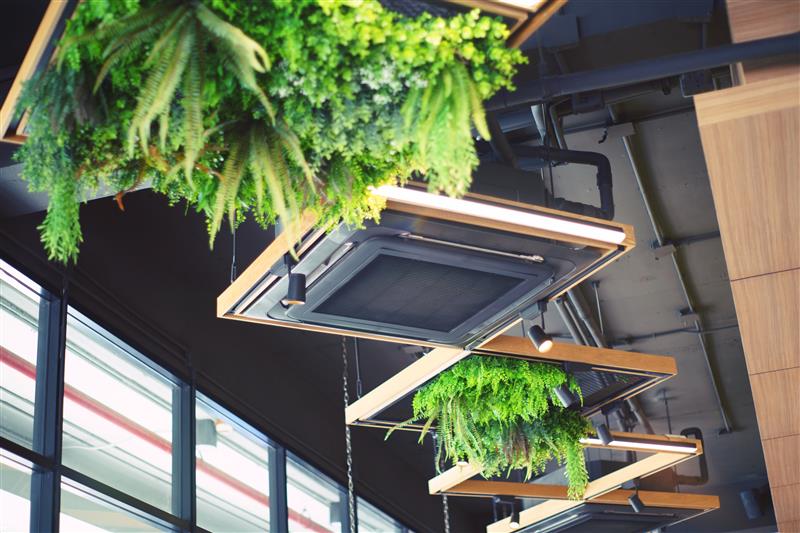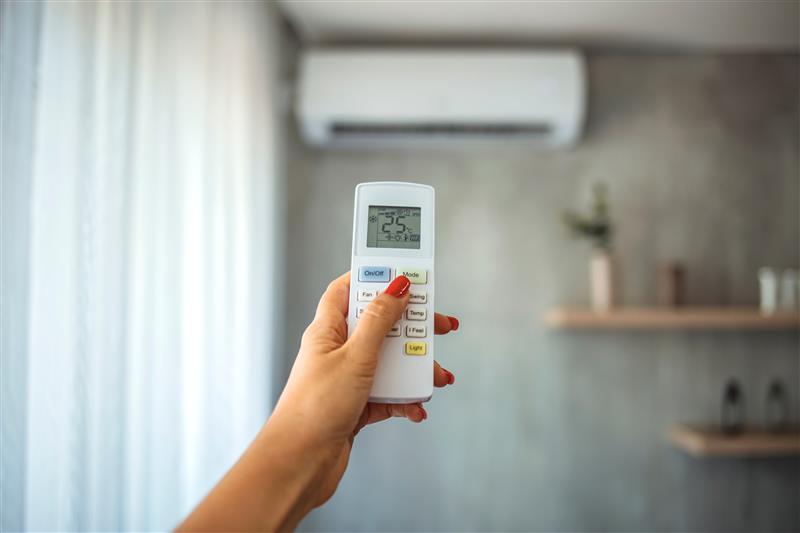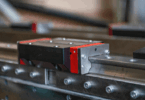Ever worked in an office that was too hot or too cold? You’ll know just how important good air con really is. It’s not just about being comfortable – it’s about being productive, reducing distractions and protecting equipment from overheating. With energy efficiency and staff wellbeing now top of every employer’s agenda, choosing the right air con has never been more crucial.
Whether you’re kitting out a new office or upgrading an old one, there’s a lot to consider. From system types and room sizes to installation costs and maintenance, each option has its pros and cons. To make the decision easier, we’ve outlined the top air con systems for office spaces in 2025 and what makes each one stand out.
1. Split System Air Conditioners
For: Smaller offices, meeting rooms or individual office.
Split systems are still one of the most popular and reliable solutions for office cooling. They’re made up of two main parts – an indoor unit that blows cool air and an outdoor unit that expels heat. This might be all you need if you have a small office or a few enclosed rooms.
“Unlike ducted air conditioning units that require extensive ductwork, split systems are simpler to install, which typically keeps installation costs comparatively lower”, says Michael Cormier, Aircon technician at Air Con Service Near Me.
Modern ones are also much more energy efficient than ones from 10 years ago, with inverter technology that adjusts power output based on the room’s temperature.
Pros:
- Affordable upfront cost
- Quiet operation
- Easy to install
- Great for individual room control.
Cons:
- Not suitable for larger open-plan offices
- Requires an outdoor unit for each indoor one.
2. Ducted Air Conditioning
For: Large open plan offices or entire floors.
Ducted air con is a more comprehensive solution, especially for businesses that occupy larger premises. These systems have a central unit, usually hidden in the ceiling or under the floor, that pushes air through a network of ducts into different areas of the office.
The biggest plus is the even distribution of air and the ability to cool multiple rooms at once. Many newer ducted systems also have zoning control, so you can adjust temperatures in different areas for different departments or zones.
Pros:
- Clean design
- Consistent cooling across all areas
- Zoning for better energy management.
Cons:
- Higher installation cost
- Not suitable for very small spaces*
- Requires more planning.
3. VRF/VRV Systems (Variable Refrigerant Flow/Volume)
For: Multi-storey buildings or offices with complex layouts
VRF (or VRV, depending on the manufacturer) systems are the heavyweights of office air con. These systems are super flexible and super efficient, especially in buildings with varying room sizes and usage patterns.
What makes VRF stand out is its ability to heat and cool different zones at the same time. For example, one department can have the air con on while another has heating—all from the same system. They also modulate refrigerant flow based on demand, which reduces energy consumption.
Pros:
- Extremely efficient
- Flexible zoning and temperature control
- Great for varied or large-scale office environments.
Cons:
- Expensive to install
- Requires experienced technicians for servicing
- Longer lead time for parts and installation.

4. Cassette Air Conditioners
For: Medium-sized offices with suspended ceilings.
Cassette units are mounted in the ceiling and blow air in four directions. They’re commonly used in retail environments but work just as well in office spaces. Their discreet appearance and even airflow make them a favourite for spaces where aesthetics matter.
Many cassette units come with motion sensors that adjust output based on occupancy, which can be an excellent feature for conserving energy in meeting rooms or less frequently used areas.
Pros:
- Unobtrusive and stylish
- Even air distribution
- Works well in suspended ceilings.
Cons:
- Needs ceiling space
- More expensive than split systems.
5. Portable Air Conditioners
For: Temporary workspaces, server rooms or emergency cooling.
While they’re not a long-term solution for most offices, portable air conditioners have their place. If you’re dealing with a hot spot, a malfunctioning unit or a temporary setup, a portable air conditioner can get you out of a jam.
Just remember: they’re noisier, less efficient and take up floor space. But for quick fixes they’re invaluable.
Pros:
- No installation required
- Easy to move
- Great for emergencies.
Cons:
- Noisy
- Not energy efficient
- Only cools a small area.
6. Evaporative Coolers
For: Offices in dry climates or warehouse-style setups
Evaporative coolers (also known as swamp coolers) use water to cool the air and work best in hot, dry climates. They’re much cheaper to run than refrigerated systems and also introduce fresh air into the space.
However in humid climates they’re less effective and may require a consistent water supply to operate efficiently. They’re best suited for warehouses or open-plan industrial-style offices.
Pros:
- Very low running costs
- Fresh air circulation
- Environmentally friendly.
Cons:
- Poor performance in humid areas
- Requires regular maintenance
- Adds moisture to the air.
Things to consider before choosing
Choosing the right air conditioning system for your office isn’t just about the size of the space — it’s about how the space is used. Here are a few questions to ask before making a decision:
- How many people use the space daily?
- Is it open plan or divided into separate rooms?
- Are there equipment-heavy areas, like server rooms?
- How important is noise control?
- What’s the budget for both installation and running costs?
Also check if your building has any restrictions on external units. Listed buildings or shared complexes may have rules that affect your options.
Cooling solutions that drive productivity
Office air conditioning has come a long way. What was once seen as a luxury is now a standard feature in most offices and for good reason. Comfort impacts everything from productivity and morale to health and long-term building maintenance.
The right system for your office depends on your specific needs but with the right setup you’ll create an environment that works for your people, your business and your bottom line. If in doubt, always consult a trusted HVAC specialist to walk you through your options. They’ll help you balance budget with performance and avoid any costly mistakes.
Because when the heat is on, you want your office to keep its cool.







